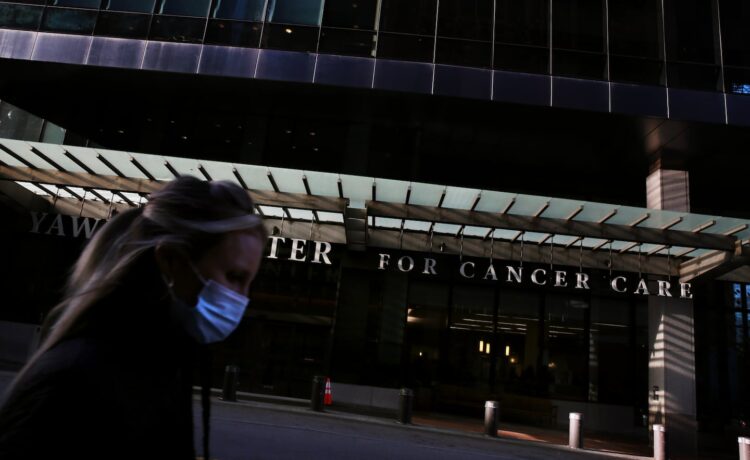In its report, the Department of Public Health largely sided with Dana-Farber, recommending the cancer hospital for approval and dismissing many of Mass General Brigham’s concerns. The department’s Public Health Council will consider the report when it votes on the project March 20, a critical approval necessary for it to move forward.
The filings show just how contentious the split between Dana-Farber and Mass General Brigham has become, and hints at more strife to follow as the project moves toward final sign-offs from key state agencies.
“In most of the country, it’s a war against cancer. Here, it’s a war over the cancer dollar,” said Paul Hattis, a senior fellow at the Lown Institute, a Needham-based health care think tank. “For MGB and Dana-Farber, it’s a function of: to fill this 300-bed new building, are those patients going to come from the Brigham, or everywhere else? That’s the crux of their difference of opinion.”
Massachusetts’ cancer care landscape has been shifting since Dana-Farber announced in September 2023 that it planned to end its arrangement with the Brigham by 2028 and build its own cancer facility in partnership with MGB’s rival, Beth Israel Deaconess Medical Center. Over the past year, both Mass General Brigham and Dana-Farber have touted separate visions for cancer care and ratcheted up marketing campaigns on their programs.
Quietly, the health systems have also been battling over the size, scope, and cost implications of the proposed hospital before state regulators, with the parent organization for the Brigham contesting Dana-Farber’s justifications for the new project, and ringing warning bells about the ripple effects if it moves forward.
“Because these beds are not needed by [Dana-Farber], the proposed project will destabilize the Commonwealth’s health care system,” MGB said in a Feb. 13 letter to state officials. “If built as proposed, the new hospital will lead to increased healthcare costs, a more expensive labor market, a damaging shift of patients from community hospitals that currently provide cancer care, and a critical worsening of [emergency department] capacity and boarding, which is already at a crisis level.”
Dana-Farber’s proposals call for a 688,100-square-foot inpatient hospital on the campus of Beth Israel Deaconess Medical Center, jointly staffed with Beth Israel and largely overseen by Dana-Farber. In all, the proposal seeks to move inpatient cancer care, currently at Brigham and Women’s, to the new hospital.
Throughout its application, Dana-Farber has asserted its current patients — those served directly by Dana-Farber and through its Brigham partnership — will follow Dana-Farber to its new collaboration.
Such a change would not increase health care spending beyond the state’s annual 3.6 percent benchmark, Dana-Farber’s hired consultants said in a cost analysis in January. Dana-Farber has suggested that care delivered at Dana-Farber and BIDMC would be less expensive than that at the Brigham and at Massachusetts General Hospital, leading to lower medical spending.
Mass General Brigham wasted little time pushing back, filing within weeks a nine-page letter with DPH staff calling Dana-Farber’s analysis “flawed, leading to unrealistically low estimates of the potential increase in healthcare costs.” MGB expects only 30 percent of Brigham patients might move to the new Dana-Farber facility.
Rather than drawing patients from Brigham beds, Mass General Brigham said, the new hospital will in fact attract approximately 5,000 patients from other hospitals, including other academic medical centers in Boston and community institutions all over the state, which would result in higher overall costs for cancer care.
Among other criticisms, MGB said the project will drive up labor costs, with the hiring of what amounts to approximately 2,400 new, full-time positions, putting pressure on an already tight medical job market. In all, the project could increase total medical spending by as much as 14 percent, MGB said.
Ultimately, DPH staff relied on Dana-Farber’s cost analysis, and confirmed the project met all necessary requirements. The department did recommend imposing some conditions on the new hospital, such as metrics that will track how many patients Dana-Farber serves on MassHealth, the state’s Medicaid program for low-income people. The DPH staff also suggest tracking revenue from patient care delivered in the hospital to ensure it stays below state limits on health care growth, and to develop a plan, if the amounts are exceeded, for Dana-Farber to invest in initiatives for underserved populations.
Dana-Farber celebrated its step toward approval in a statement.

State officials “undertook a robust and extensive review process that confirms the need for our new inpatient cancer hospital and recognizes its potential cost savings on total medical expenditures in the Commonwealth,” a Dana-Farber spokesperson said in an email.
The hospitals have more than just a vision for patient care on the line. Huge portions of Brigham’s revenue are at stake as Dana-Farber walks out the door, and tries to bring patients along with it. Approximately 40 percent of all Brigham surgeries are related to cancer, Brigham spokespeople have previously said. The hospital also conducts 100,000 radiation oncology treatments annually. One in four patients tested at the Brigham’s emergency room has cancer, and 8,700 patients are cared for by Brigham cancer experts in the hospital each year.
In addition to the vote by the Public Health Council scheduled for March, the project must be vetted by the state Health Policy Commission, which is expected to release preliminary results next week. Those findings may also influence the Public Health Council decision.
Some health care groups that are not involved with the project had a lukewarm assessment of the DPH report, in particular decrying what they said was a lack of meaningful conditions to control costs.
“At a time when we need to be focused on health care costs, the staff recommendations seem to be very weak in holding this new entity accountable to the cost benchmark,” said Lora Pellegrini, chief executive of the Massachusetts Association of Health Plans, a trade group representing insurers.
Hattis, of the Lown Institute, was also not convinced the Dana-Farber project would reduce health care spending, and expects a more robust analysis by the state’s Health Policy Commission.
“It’s not clear to me that the war over the cancer dollar leads to something good for the consumer,” Hattis said. “The state’s job, since the war is here and will be here no matter what, is to make sure that this war falls for the benefit of consumers, and not simply the provider actors in the mix.”
Jessica Bartlett can be reached at [email protected]. Follow her @ByJessBartlett.















